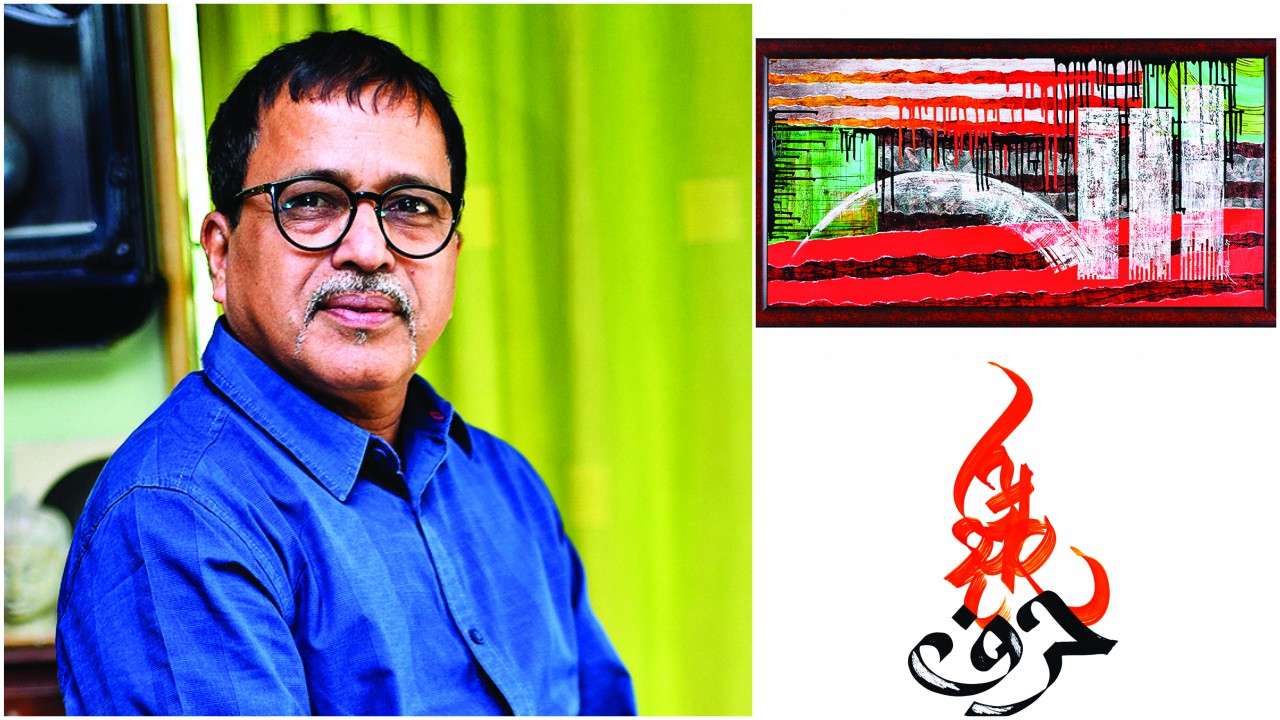
As I sat down to talk to Achyut Palav at Worli's Nehru Art Gallery, a burqa clad lady called out to him "Aap jaise logon ki vajah se lagta hai insaniyat abhi zinda hai (Because of people like you, it feels like humanity is still alive)". The gratitude on the viewer's face was unmistakable.
Titled, Ishwar Allah Tero Naam, the exhibition unifies two scripts on canvas – Devanagari by Achyut Palav and Nastaliq by Salva Rasool. Each canvas is a burst of vibrant colours using minimalistic depictions of the painted word.
While Rasool’s artwork carries themes of hope, compassion and humanity, Palav’s paintings carry two words, one each from the two scripts having the same meaning fused together artistically. “I don’t see religion, I see the languages. I have created this art purely out of love for these two scripts,” says Palav.
About a year and a half ago, Rasool approached Palav suggesting that maybe they must collaborate on a joint exhibition, sticking to their individual canvases and portray them next to each other to show to the world something beautiful. “Art breaks all barriers and if we as artists can bring together such diverse styles then why can’t all humans do the same? Art has the power to bring people closer,” says Rasool.
The written word fascinated both Rasool and Palav since their childhood days. Salva was taught to read the Arabic script and the Quran at home. And over the years, she discovered the diverse ways in which it could be arranged through calligraphy – a circle, top to bottom, bottom to top, and more. Palav, on the other hand was inspired in school when his teachers assigned him the task to creatively write the thought for the day, that culminated into a deep interest towards typography and calligraphy.
Salva’s paintings are inspired by Picasso's cubism and uses a lot of colours and paints. Her calligraphed Arabic letters depict communal harmony, hope, acceptance and unity. She has also fashioned her own tools, thereby not limiting herself to the readymade calligraphy and painterly ones available. One painting portrays the word ‘Mashallah’ or ‘God’s Will’. It implies that God has plans for everybody and that something better is always in store. Rasool’s favourite painting of the lot is of a boat with crescent sails against a backdrop of purple clouds, an ode to the innocence, creativity and exuberance of childhood.
Palav's paintings depict ideas of the world and his interpretation of the world. For this particular exhibition, he engaged in a jugalbandi between words from the two scripts. His favourite painting interprets the word Ham in both the scripts. “Tya ham cha zo curve aahe, tyala ek grace aahe, te atishay avadta mala (the curve of the word ham has this grace that I really like),” says Palav, who has chosen words from different languages that go beyond the borders of religion and yet are omnipresent - Bindu and Nukta; Akshar and Harf; Sangeet and Mausiki, Agni and Aag; Zameen and Ekta.
Both Rasool and Palav’s canvases tell story sans prejudices, seeking to generate among people, respect for each other and diverse languages through scripts.